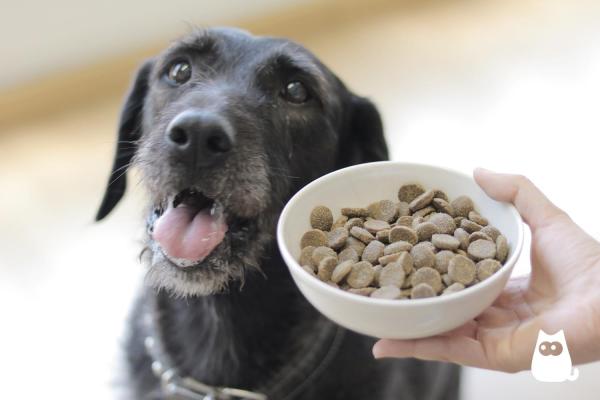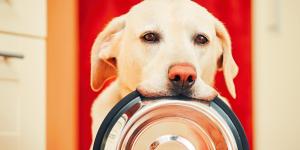Food Intolerance in Dogs - Symptoms and Diet



See files for Dogs
Dogs suffering from food intolerance require a specific diet. In this case it is also important to understand that their is a difference between food allergies in dogs and food intolerance in dogs. Dog food intolerance symptoms need to be recognized in order to treat this condition accordingly.
In this AnimalWised article we will be discussing the best diet for food intolerance in dogs. It is important to consider the food intolerance symptoms in dogs, its main signs,and what the best food is to offer our dog: in order to improve its quality of life. In the case of food intolerance in dogs, a homemade diet is can be an option. However, quality commercial food for dogs holds considerable advantages. Keep reading to find out more about common food intolerances in dogs!
What is the difference between food intolerance and food allergy?
Dogs sometimes react to food components as if they were pathogens. This is known as an adverse reaction to food. Those that most commonly produce problem, include; milk, beef, wheat, egg, soy and corn. These are trophoallergens, otherwise known as the allergens which are part of the food.
If the adverse reaction from the dog is mediated by the immune system, specifically by IgE (immunoglobulin), it is considered a food allergy. If not, it is food intolerance which, in turn, is classified according to the type of substance that generates it. Thus, it may be; metabolic, pharmacological, toxicological or idiopathic, and the cause remains unknown. Therefore, it is important to know that there is a difference between dog allergy and food intolerance in dogs.
The symptoms of allergy and intolerance in dogs are, however, the same. In addition, these disorders generally cannot be cured. However, there are treatments that can help your dog live a somewhat normal life. The key to this wellness is to establish an elimination diet, where the specific diet and food you choose for your dog is specifically chosen.
Food intolerance in dogs - symptoms
Food intolerance in dogs symptoms include;
- Skin disorders, such as; atopic dermatitis, usually manifested by non-seasonal itching.
- Otitis (ear infection).
- Digestive disorders, such as; intermittent vomiting, diarrhea, loose stools or an increase in digestive noise (bowel sounds).
- Respiratory symptoms in dogs, characterized by; sneezing, rhinitis or asthma.
This clinical case can appear in dogs of all ages, although food intolerance in dogs is more common in younger canines. It is specifically more common in puppies and dogs under 3 years of age. In addition to treating these symptoms, this adverse reaction to food requires setting a specific diet for dogs.

Food intolerance in dogs- dog elimination diet
If you suspect that your dog is suffering from an adverse reaction to food: treatment includes setting your dog an elimination diet. This type of dog diet is based on feed that is specifically made for dogs with food intolerance.
This diet consists of offering a dog an elaborate meal based on proteins and carbohydrates that it has not previously consumed. In order to choose the best feed, you need to date back and take down an exhaustive history, noting absolutely everything that your dog has ingested prior. If this is not possible, you can opt for hydrolysed feed. Hydrolysed feed is a type of feed in which proteins have undergone a process of hydrolysis, by which they break down into tiny fragments. These fragments are so small that it is not possible for them to generate any adverse reaction.
With this in mind, Royal Canin - Canine Hydrolyzed Protein Adult HP dry dog food or TASTY PET stand out as some of the most recommended brands of dog feed for dogs suffering from food sensitivity. They use natural ingredients when manufacturing their products. These feeds are also considered; hypoallergenic, highly digestible and assimilable.
Once you have chosen the appropriate feed for your dog, it should be fed this feed for about 8-12 weeks. In order to evaluate this treatment correctly, your dog should be given absolutely nothing else but this feed to eat. Be careful when walking your dog, muzzle it in the street so that it doesn’t accidentally eat any remains or waste. Also, if you use dog toothpaste, we recommend stopping it for this period of time.
If the symptoms of your dog’s food intolerance disappear, you can start giving it its old food. If it relapses and the same symptoms reappear, a diagnosis of adverse reaction to this food can be confirmed. It is possible that your might dog respond positively to the elimination diet but does not relapse when offered their old food. In this case, it can be considered that your dog has benefited from the characteristics provided by the elimination diet, as it tends to hold better digestive properties.
Food intolerance in dogs - composition of feed
In order for the feed for dogs with food intolerance to be successful, this feed must be monoproteic. This means that it must only have one single source of protein. In addition, this protein must be unusual enough that your dog most likely hasn’t eaten it before. Among those, we include; rabbit, pig, horse, tuna or any other blue fish, duck or deer. This always depends, however, on what the dog has consumed prior. This protein must also be of high quality and specified in the list of ingredients of the feed, as well as with the carbohydrates. These carbohydrates should also be somewhat uncommon. Opt for carbohydrates, such as; potatoes, peas or barley.
On the other hand, including Omega 3 fatty acids in your dog’s diet can help control inflammation which is also known to cause intolerance. Some necessary feeds may also include; prebiotic fiber.

Food sensitivity in dogs - the best feed
Choosing a feed made for dogs with food intolerance, has several advantages. Other feeds are often not appropriate, their composition is not detailed and their manufacturing processes are not specified. Also, if you do not have the right knowledge to correctly establish an adequate diet for dogs with food intolerance, the best option is to opt for specific feed.
Take a look at these notable advantages of dog feed appropriate for food intolerance in dogs;
- You can guarantee that this feed is both complete and balanced. You can also choose a feed specific to your dog’s; age, size and breed.
- The management of this feed is simpler when it comes to; administration, accessibility, transport, storage and conservation.
- The only small disadvantage is the presence of additives, although these are not usually responsible for adverse reactions.
- You can be sure that you are providing your dogs with the adequate; fatty acids, vitamins, minerals and carbohydrates that it needs. This is also done through having only one option with proper veterinary tested measurements.
- Depending on the type of intolerance your animal is suffering from; the price may be more affordable than that of a homemade diet.
Regarding the price of dog feed, it should be noted that more expensive dog food does not mean better quality dog food. On the market, there are currently food brands with competitive prices and natural ingredients, which are still considered products of high quality. However, when in doubt, you can consult your veterinarian. A professional will be able to help guide you to the right food for your dog and their specific intolerance.

If you want to read similar articles to Food Intolerance in Dogs - Symptoms and Diet, we recommend you visit our Diet problems category.








